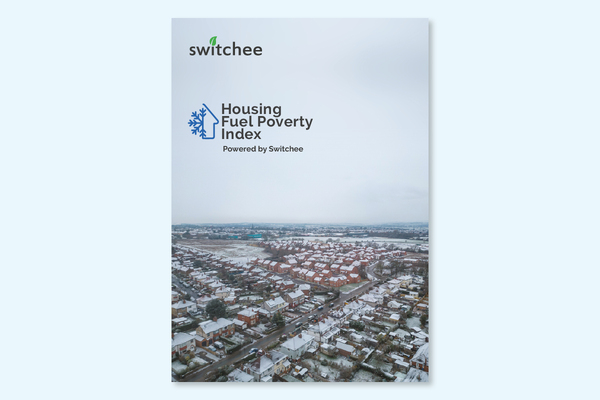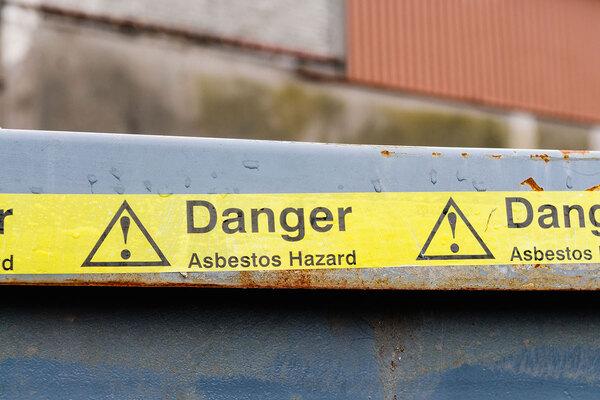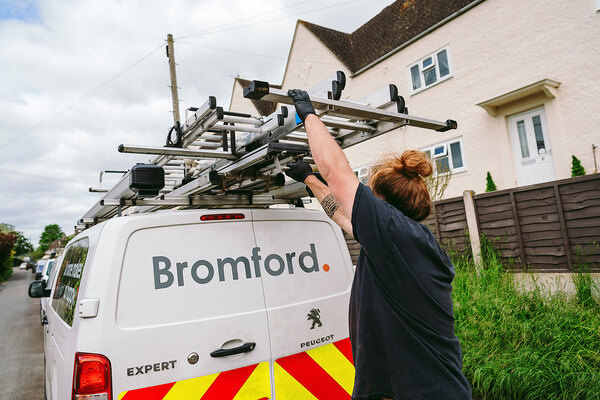Housing Fuel Poverty Index: overall improvement in fuel poverty in 2024
From September to December, there was a small rise in the proportion of social homes in the UK failing to reach 18°C in any seven-day period, but the overall picture for last year showed improvement, according to smart thermostat provider Switchee’s Housing Fuel Poverty Index
In association with:
![]()
There was another small uptick in the proportion of social homes in the UK experiencing fuel poverty in the final three months of 2024, according to the latest data update from smart thermostat provider Switchee. However, the annual picture for 2024 shows an overall improvement in fuel poverty.
Switchee’s quarterly Housing Fuel Poverty Index, the data from which is shared exclusively with Inside Housing, uses smart devices in social rented homes to track fuel poverty in real time. Those homes failing to reach 18°C in any seven-day period are deemed to be in fuel poverty. Using this metric, the latest data shows that, from September to December 2024, an average of 4.72% of social homes were in fuel poverty, up from 4.53% during the same period in 2023.
The new figures also give us the first opportunity since this index has been published in Inside Housing to compare an entire calendar year. This shows a much more positive trend, with an average of 4.5% of homes in fuel poverty on any given day in 2024, compared with 5.42% in 2023. That translates to one in every 21 homes being in fuel poverty in 2024, as opposed to around one in 18 during the previous 12 months.
This suggests some of the issues around fuel poverty are being addressed, despite continuing pressure on household energy bills. And the figures are particularly encouraging given that the UK was cooler in 2024 than in 2023. The average temperature across the country in 2024 was 9.78°C, more than half a degree above the average from 1991-2020, according to the Met Office, but slightly cooler than the average of 9.97°C in 2023.
Regional trends
Looking across the full calendar year, the rate of fuel poverty fell in all but one UK region in 2024, as judged on Switchee’s metric. Only in Yorkshire and the Humber did it increase, with an average of 3.78% of social homes failing to reach 18°C in any seven-day period, compared with an average of 2.96% of homes in 2023.
Greater London had the lowest level of fuel poverty in 2024, with just 3.1% of social homes on an average day being classed as in fuel poverty. That was down from an average of 3.62% in 2023.
4.5%
Percentage of homes in fuel poverty on any given day in 2024
5.42%
Percentage of homes in fuel poverty on any given day in 2023
Wales showed the most dramatic change in fuel poverty, with the average rate falling by a higher proportion than any English region. In 2023, an average of 8.64% of social homes failed to reach the 18°C threshold on a typical day, but that figure dropped to just 5% in 2024, an improvement of more than 40%. By contrast, Scotland showed relatively little change year on year, improving from 5.4% in 2023 to 5.34% last year.
Among English regions, the South West and West Midlands continued to have the highest proportion of social homes in fuel poverty, although they were also among the most improved performers year on year.
In the South West, an average of 5.79% of homes were in fuel poverty during 2024, while in the West Midlands the figure was 5.69%. However, both regions showed an improvement of more than 20% compared with 2023, when their averages were 7.31% and 7.2% respectively.
After the capital, the East of England had the lowest rate of fuel poverty, with an average of 3.27% of social homes failing to reach 18°C on any given day. That was down from 3.98% in 2023.
The South East and East Midlands were the other two regions that outperformed the national average in 2024. In the South East, 4.32% of homes on an average day were judged to be in fuel poverty, down from 5.22% in 2023, while in the East Midlands, the figure was 4.45%, down from 5.3%. These represented improvements of 17% and 16% respectively.
The North East showed similar levels of improvement, with 5.47% of social homes in the region found to be fuel poor on average in 2024, compared with 6.52% during the previous 12 months.
“The latest data shows encouraging progress in tackling fuel poverty across the UK, despite ongoing energy challenges, says Izzy Henry, data analysis lead at Switchee.
“However, regional disparities remain; a continued focus on addressing fuel poverty will be crucial to ensure all regions benefit from these positive trends.”
Recent content in association with Switchee
CPD webinar on demand: fostering data-driven engagement with residents on fuel poverty
As part of Inside Housing’s CPD offering, watch the full webinar and earn CPD minutes
How can social landlords use data to tackle fuel poverty?
As we enter winter and fuel bills spike, half of social tenants cannot afford to heat their homes, but identifying who those tenants are remains a challenge. Here, sector leaders discuss how better use of data could fight energy poverty
UK fuel poverty: a cool summer affects results
In the fourth Housing Fuel Poverty Index update of 2024, Inside Housing looks at the numbers reported by Switchee’s smart thermostats to help track fuel poverty across the UK
CPD webinar on demand: how can social landlords assess whether retrofit is delivering intended performance improvements?
As part of Inside Housing’s CPD offering, watch the full webinar and earn CPD minutes
What do the latest fuel poverty stats tell us?
In the third Housing Fuel Poverty Index update of 2024, Inside Housing looks at the numbers reported by Switchee’s smart thermostats to help track fuel poverty across the UK
CPD module: how to approach decarbonisation policy and strategies
The policy environment on decarbonisation and retrofit is evolving, so how can social landlords continue to build strategies to meet net zero? Richard Ellis, director of sustainability at Peabody, explains in this CPD module
What will Awaab’s Law mean for landlords and residents?
An Inside Housing roundtable, in association with Switchee, discusses how incoming legislation will affect how landlords approach repairs and maintenance in their homes
Using data to deliver better services
How are landlords collecting data and using it to make decisions about asset management and meeting residents’ needs? An Inside Housing survey, with data analytics firm Switchee, finds out
Is fuel poverty on the decline?
The latest data from smart thermostat provider Switchee suggests that the fuel poverty crisis may be starting to ease. Inside Housing analyses the figures
The numbers behind fuel poverty in the UK
Switchee’s new model shows the number of social households underheating their homes across the UK in real time, during 2022 and 2023. Inside Housing looks into the figures
How can landlords help residents to save on energy bills?
Inside Housing speaks to Emma Bitting at Switchee to find out what residents can do to ensure their homes are warm, and how they can save money on bills
How landlords are using data to tackle fuel poverty
An Inside Housing roundtable, in association with Switchee, discusses how landlords can analyse data to ensure they are helping residents who are struggling with energy costs
Internet of Things devices start to make a difference
A national network of vetted installers means the industry can collaborate to provide landlords with invaluable insights, says Philip Taylor of Internet of Things device provider Switchee
Choosing smart data and tech can help landlords achieve Better Social Housing Review goals
Technology can help landlords in terms of their business and regulatory compliance, as well as improving residents’ quality of life and bringing down bills, explains Tom Robins of tech firm Switchee











